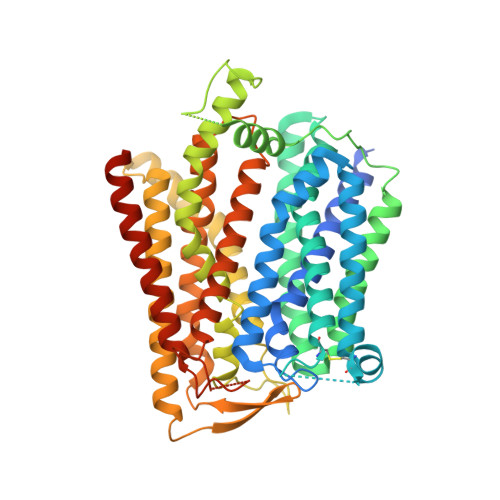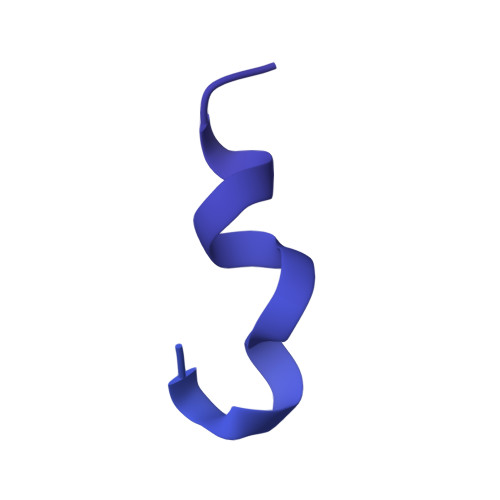Structural basis for recruitment of TASL by SLC15A4 in human endolysosomal TLR signaling.
Chen, X., Xie, M., Zhang, S., Monguio-Tortajada, M., Yin, J., Liu, C., Zhang, Y., Delacretaz, M., Song, M., Wang, Y., Dong, L., Ding, Q., Zhou, B., Tian, X., Deng, H., Xu, L., Liu, X., Yang, Z., Chang, Q., Na, J., Zeng, W., Superti-Furga, G., Rebsamen, M., Yang, M.(2023) Nat Commun 14: 6627-6627
- PubMed: 37863913
- DOI: https://doi.org/10.1038/s41467-023-42210-9
- Primary Citation of Related Structures:
8JZR, 8JZS, 8JZU - PubMed Abstract:
Toll-like receptors (TLRs) are a class of proteins that play critical roles in recognizing pathogens and initiating innate immune responses. TASL, a recently identified innate immune adaptor protein for endolysosomal TLR7/8/9 signaling, is recruited by the lysosomal proton-coupled amino-acid transporter SLC15A4, and then activates IRF5, which in turn triggers the transcription of type I interferons and cytokines. Here, we report three cryo-electron microscopy (cryo-EM) structures of human SLC15A4 in the apo monomeric and dimeric state and as a TASL-bound complex. The apo forms are in an outward-facing conformation, with the dimeric form showing an extensive interface involving four cholesterol molecules. The structure of the TASL-bound complex reveals an unprecedented interaction mode with solute carriers. During the recruitment of TASL, SLC15A4 undergoes a conformational change from an outward-facing, lysosomal lumen-exposed state to an inward-facing state to form a binding pocket, allowing the N-terminal helix of TASL to be inserted into. Our findings provide insights into the molecular basis of regulatory switch involving a human solute carrier and offers an important framework for structure-guided drug discovery targeting SLC15A4-TASL-related human autoimmune diseases.
Organizational Affiliation:
Ministry of Education Key Laboratory of Protein Science, Tsinghua-Peking Center for Life Sciences, Beijing Advanced Innovation Center for Structural Biology, School of Life Sciences, Tsinghua University, 100084, Beijing, China.
















